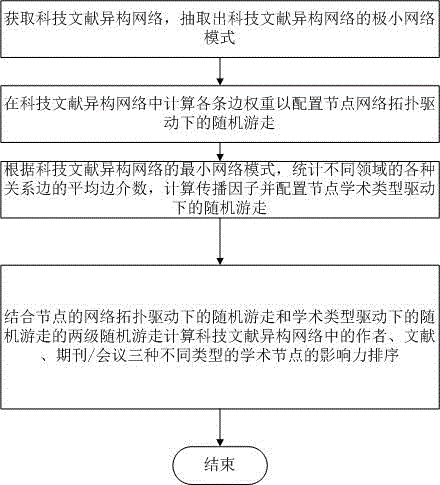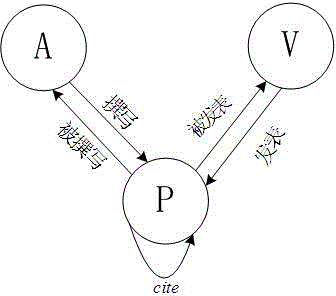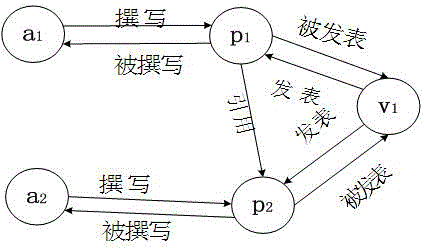Academic influence cooperative sequencing method of nodes in scientific and technical literature heterogeneous network
A heterogeneous network and sorting method technology, applied in the field of information retrieval, can solve the problems of not handling different types of edge relationships well, and achieve the effect of good sorting results
- Summary
- Abstract
- Description
- Claims
- Application Information
AI Technical Summary
Problems solved by technology
Method used
Image
Examples
Embodiment Construction
[0037]The present invention is further described by examples below, but it should be noted that the purpose of announcing the embodiments is to help further understand the present invention, but those skilled in the art can understand: without departing from the spirit of the present invention and the appended claims Various substitutions and modifications are possible within the scope. Therefore, the present invention should not be limited to the content disclosed in the embodiments, and the protection scope of the present invention is subject to the scope defined in the claims.
[0038] see figure 1 , is a flowchart of an embodiment of a method for coordinating the academic influence of nodes (papers, authors, journals / conferences) in a heterogeneous network of scientific and technological documents of the present invention, and the method includes the following steps:
[0039] A. Obtain DBLP scientific literature from the website (http: / / arnetminer.org / DBLP_Citation), proc...
PUM
 Login to View More
Login to View More Abstract
Description
Claims
Application Information
 Login to View More
Login to View More - R&D
- Intellectual Property
- Life Sciences
- Materials
- Tech Scout
- Unparalleled Data Quality
- Higher Quality Content
- 60% Fewer Hallucinations
Browse by: Latest US Patents, China's latest patents, Technical Efficacy Thesaurus, Application Domain, Technology Topic, Popular Technical Reports.
© 2025 PatSnap. All rights reserved.Legal|Privacy policy|Modern Slavery Act Transparency Statement|Sitemap|About US| Contact US: help@patsnap.com



